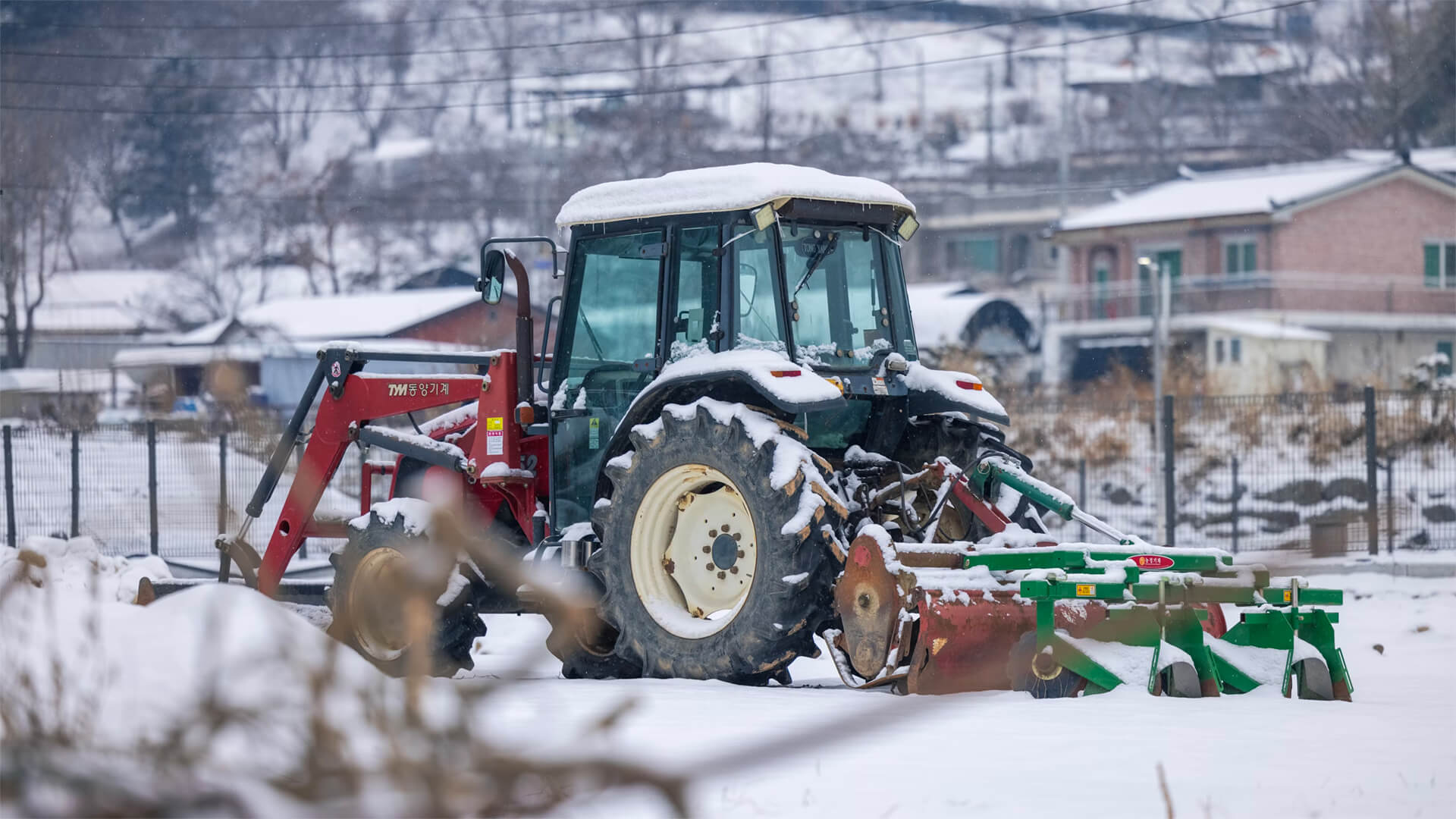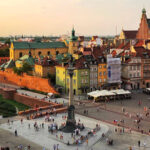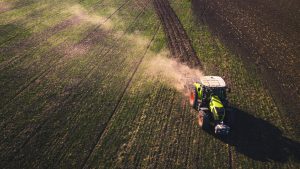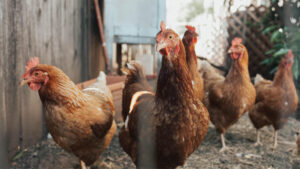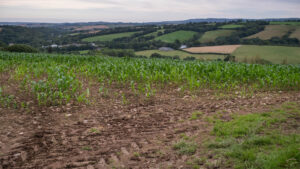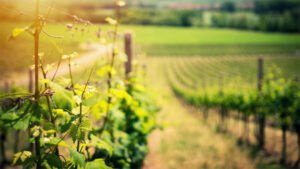Some of you out there might grovel when the first snowflakes of the season fall, but I’d be willing to bet that the geopolitical significance of that snow hasn’t crossed your mind. Today, we’ll be exploring winters impact on agriculture and global food security.
If you think of all the great agricultural zones in the world, most of them have a winter season. At face value, that might seem irrelevant, but the snow and moisture that winter brings serves as insulation for the ground and facilitates biological processes critical for agriculture.
Historically, regions with a cold winter season have been more conducive to growing crops capable of feeding large populations, such as soy, wheat, rice, and corn. However, the industrialization and development of fuels and fertilizers has enabled these crops to be grown in areas previously unsuitable for agriculture.
These advances gave way to increases in population and the cultivation of new lands, but is it sustainable? As soon as places like Brazil or China can no longer import the inputs necessary to grow enough crops to feed their populations, we’re in for a rude awakening…
Here at Zeihan On Geopolitics we select a single charity to sponsor. We have two criteria:
First, we look across the world and use our skill sets to identify where the needs are most acute. Second, we look for an institution with preexisting networks for both materials gathering and aid distribution. That way we know every cent of our donation is not simply going directly to where help is needed most, but our donations serve as a force multiplier for a system already in existence. Then we give what we can.
Today, our chosen charity is a group called Medshare, which provides emergency medical services to communities in need, with a very heavy emphasis on locations facing acute crises. Medshare operates right in the thick of it. Until future notice, every cent we earn from every book we sell in every format through every retailer is going to Medshare’s Ukraine fund.
And then there’s you.
Our newsletters and videologues are not only free, they will always be free. We also will never share your contact information with anyone. All we ask is that if you find one of our releases in any way useful, that you make a donation to Medshare. Over one third of Ukraine’s pre-war population has either been forced from their homes, kidnapped and shipped to Russia, or is trying to survive in occupied lands. This is our way to help who we can. Please, join us.
TranscripT
Hey everybody. Peter Zeihan here coming to you from snowy Colorado, where in the last 18 hours we’ve gotten 18 inches of snow, which means that this morning is a time for clearing and shoveling, but there is more to winter than shoveling and icicles. There is also the fun and games that comes with agriculture. In fact, winter is arguably the single biggest factor for how our world got to be in the shape it is, more or less the century and less century.
The issue is that when winter hits, everything stops and you have a layer of moisture that then insulates the ground. This is two things. Number one, it preserves a little bit moisture in there and then will grow a little bit back in the spring. But more importantly, the thicker the snow, the greater the insulation. And so you actually still have biological processes going on under the surface, even if right there in the topsoil.
Basically, you’ve got organic material that is decaying or as farmers like to call it, the formation of free fertilizer. If you look at the map of the world’s agricultural zones, before roughly 1900, the pre-industrial era, you’ll notice certain patterns. The American Midwest to a degree, the American Piedmont, Northern Europe, Central Eurasia, the real plot to basin in South America and the southeastern part of Australia and South Africa.
sorry, I forgot. Northern China as well. What are these areas all have in common? It’s cold. You get some snow and so you get that recharge system. There are temperate climates where the free fertilizers kind of baked into the cake. If you go outside of those zones, pre 1900, it’s not that there’s not agriculture, but by definition it’s almost not large scale.
And most of the crops that feed most of humanity. So you’re talking rice, soy, wheat and corn. Those four crops grow best in those conditions. You move out of those zones and you’re talking different crops, things like sweet potatoes or yams. And it’s not you can’t support a population with those things. It’s that you can’t support a large population with those things.
So they’re not nearly as amenable to road crop edge. It’s more subsistence farming as a rule. Now, that, of course, changed, right, right around between 1900, 1945 for some countries and then between early 1990 and 1985 for the rest. What happened there was first the development and then the mass application of industrial level agricultural inputs, things like fuels and fertilizers, which allowed you to plant more traditional crops in zones that normally weren’t really great for it.
In addition, those lower output crops per acre. If you started putting things like fertilizer, they would do a lot better. As a rule, the industrialization of agriculture had a bigger impact on marginal lands than it did on the Prime lands. The prime land still saw their output increase by 50% to 150%. But it’s the marginal lands that saw a tripling, quadrupling or even more.
Now, something to keep in mind with all those secondary lands, if you’re talking about, say, a step where it’s just dry with agriculture, doesn’t it? Nothing really happens. If you’re talking about the tropics, yes, you have a riot of growth, but the nutrients are consumed by that growth as soon as the growth rots. So if you clear the jungle and the rainforest, the soil that’s left behind is almost nutrient non-existent.
And without those industrial level inputs, you really can’t grow crops at scale in these zones. Now, because of industrialization, of agriculture, we haven’t simply seen that the part of the world that humans cultivate expand by a factor of three. We seen the population expand by a factor of three as well. My concern is that we’re entering an era where the supply chains that allow those industrial inputs to function to exist are going to break down.
And for countries like China or Brazil who import the vast, vast, vast majority of those inputs, that means the ability to sustain post 1900 levels of population are going to be hugely hit. In the case of Brazil, they still have portions of the country that are still temperate. It’s not like they’re going to starve, but they’re no longer going to be a massive agricultural exporter to places like Brazil.
So for those of you who live in a place where you don’t have snow, yes, you get more time on the beach and you don’t have to shovel. But it also means the security of your food supply is decided by people in different climate zones with supply chains that are a continent away that you have no ability to protect or even influence.
And the world we’re going into, that’s going to be a little rough.

